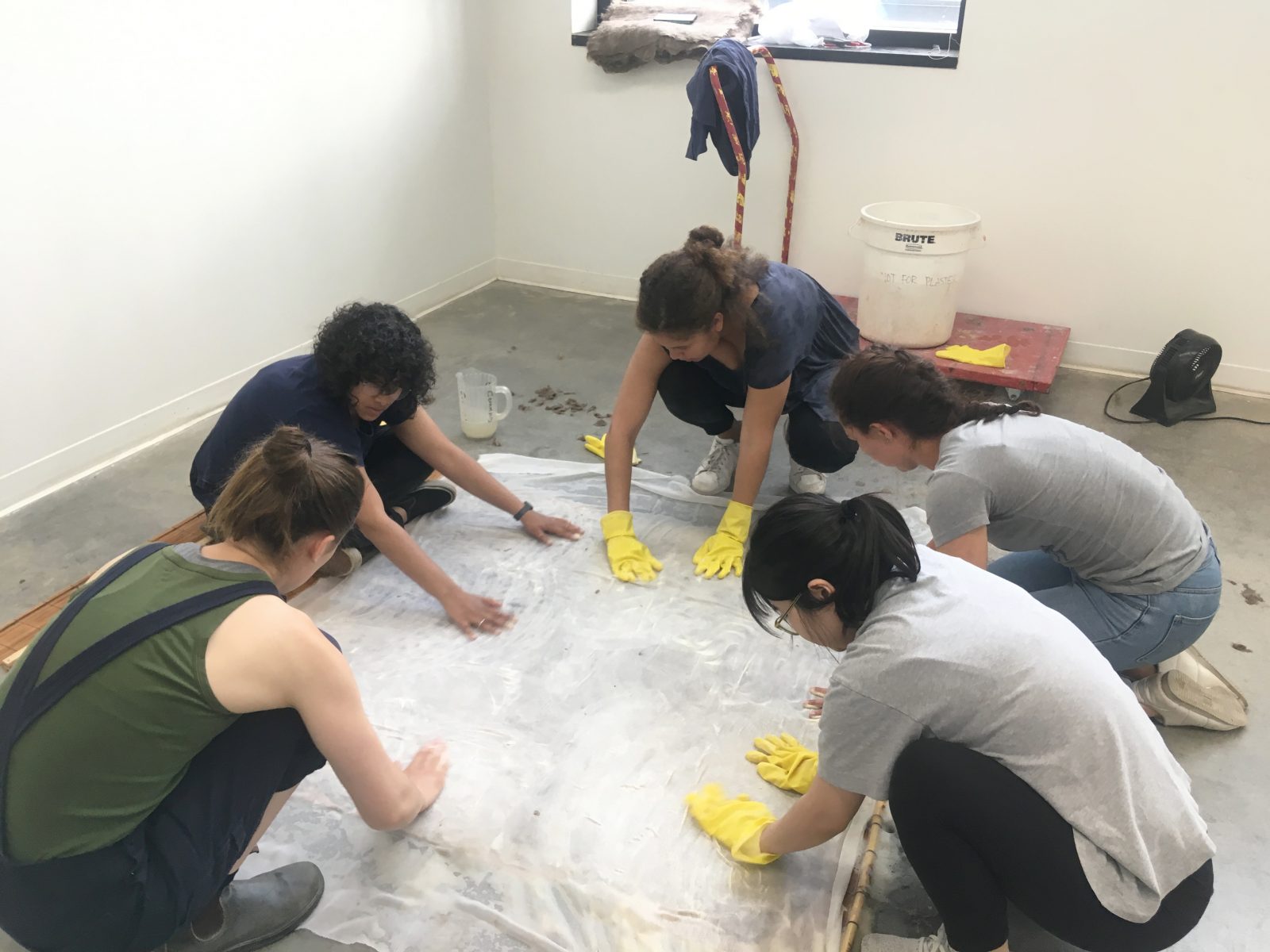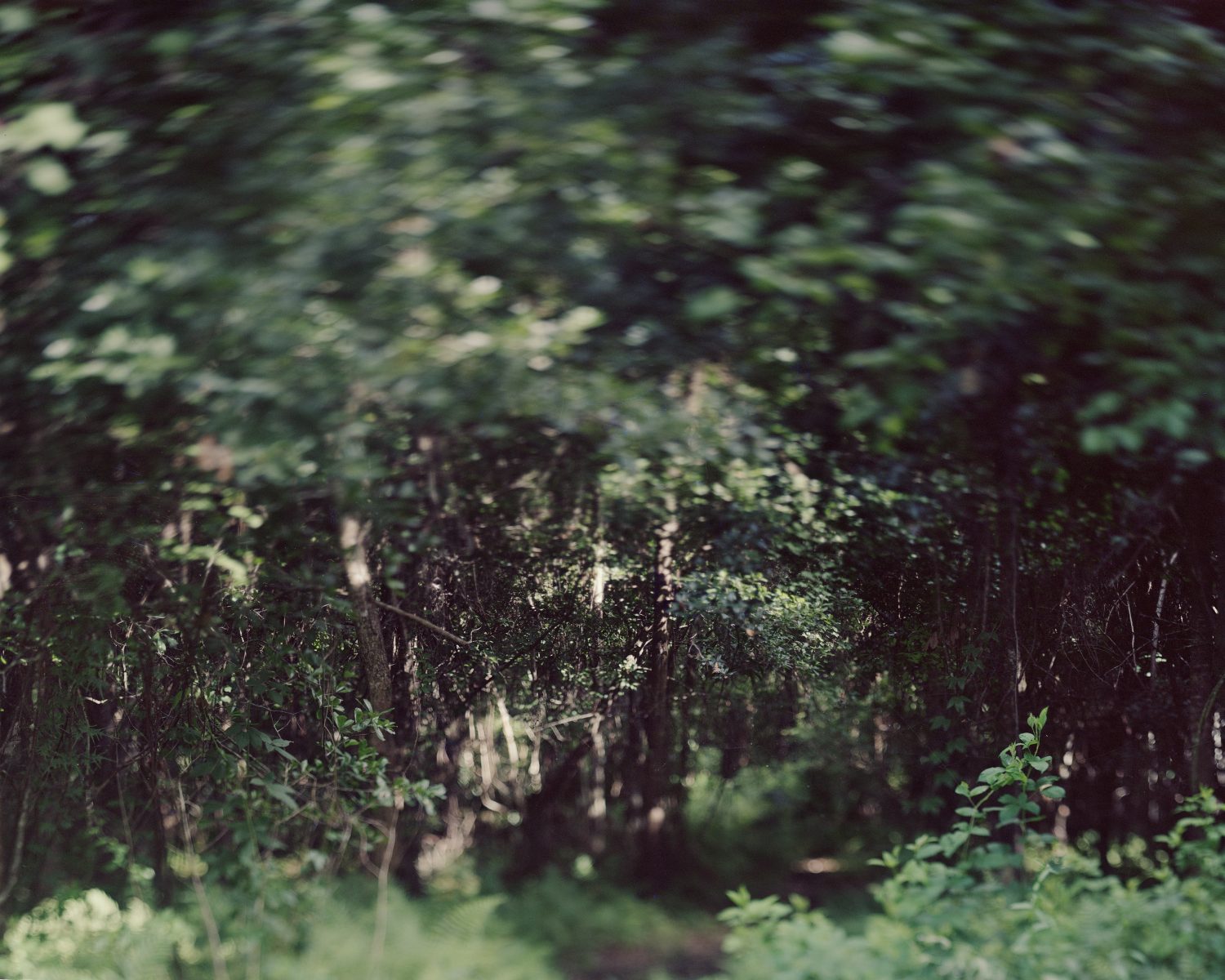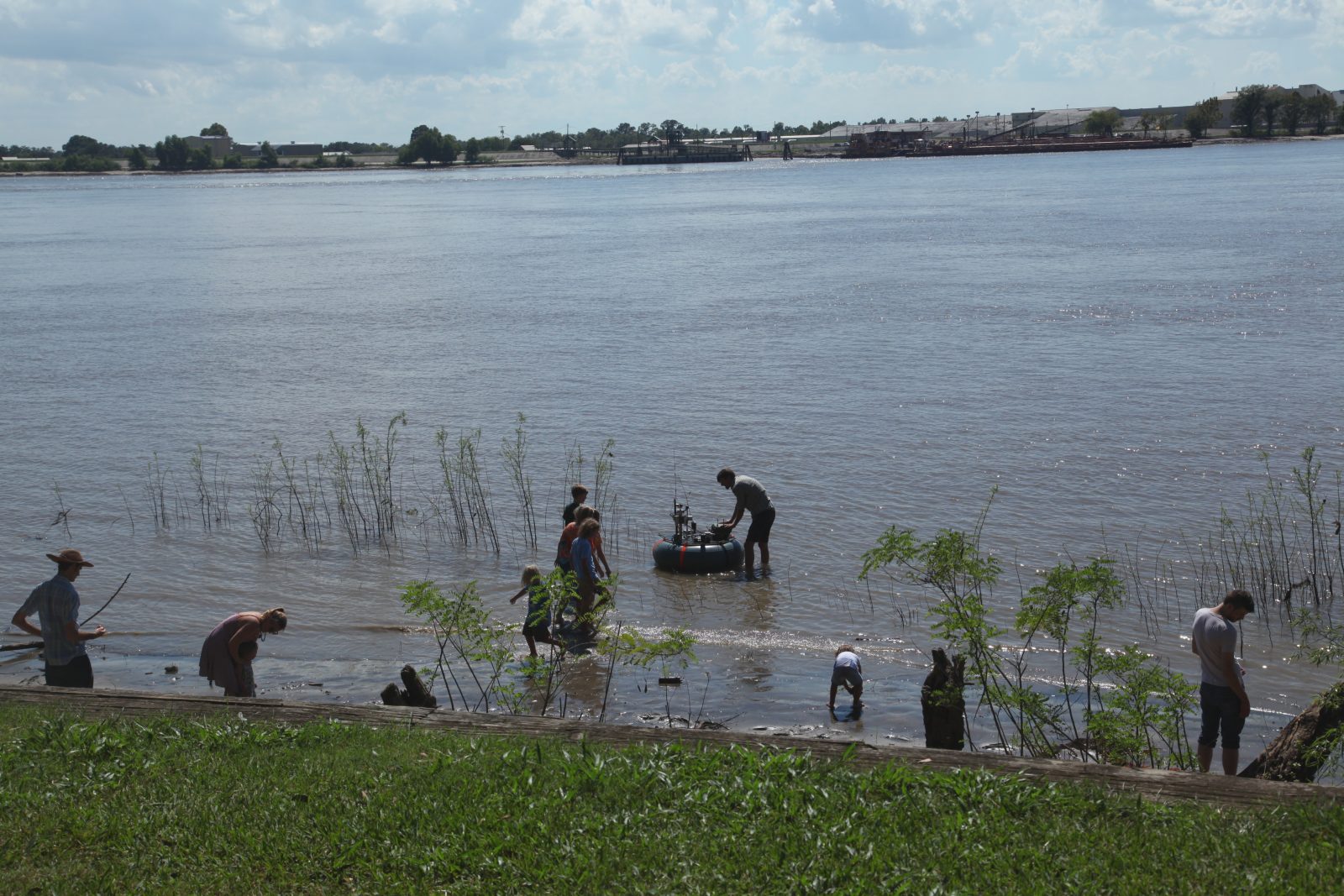Listening to the Mississippi, 2019
There is no one correct way to listen to the river; there are multiple listenings, and multiple rivers. Listening to the Mississippi is an iterative project conceived in 2013 by a collective of artists and musicians, which in 2019 manifested as a sound composition and traveling listening station. The project asks listeners to orient themselves to the river through their sense of sound, rather than sight alone, and is rooted in the belief that powerful realities about the Mississippi River can be elicited by listening to it more carefully.

Listening to the Mississippi uses underwater recordings gathered in 2015 by a collective of artists and musicians that span the river from the headwaters to the Gulf. An environmental robot called ORB (who navigates waterways and bayous and was designed by Müllauer and collaborators in Berlin) collected the data and animated their actions. Here, recording and gathering sounds became a process of sharing with, and learning from, people along the river’s banks.
Those sounds attune us to various sections of the river. They include the newborn gurgle of the river’s headwaters in Minnesota, the noises of boats, fish, the ancient alligator gar common in the lower Mississippi. Listening, one encounters various auditory transitions between the natural and the industrial. Sounds blend and blur into one another, shifting one’s perceptions about the ecological life of the river and, at times, becoming indistinguishable from each other. At the confluence of the Mississippi and the beautifully muddy Missouri river in St. Louis, for example, one can hear the heavy static of river silt as it hits a submerged hydrophone: the force of massive waterbodies moving sand and silt below the water’s surface, otherwise imperceptible to visual observations alone.
In the present iteration of Listening to the Mississippi, prepared specifically for Mississippi: An Anthropocene River, composers Michi Wiancko and Judd Greenstein have created an audio landscape that takes the listener on an imaginative journey down the river, blending original composed music with sounds of both natural and human worlds captured from the Mississippi itself.
The listening pack is made to transport, hold, and support Wiancko and Greenstein’s composition. It is designed to be mobile and adaptable for listening at rural and urban sites along the riverbank, from the upper Mississippi to New Orleans. Visitors arriving at each listening station can check out a listening pack and explore the composition at their own pace, walking where they choose along levees and river battures, and adjacent woodlands.
The listening pack takes at its starting point the reality that active listening requires work and support. Artists Erika Terwilliger, Prerna, Harriet Matzdorf, and Monica Haller led a collaborative team effort to make listening mats that invite the listener to sit, stay, linger, and be present where they are. The mats are made of wool, felted using Mississippi river water. Felting large mats of wool is a physical process: on hands and knees, the team worked the wool and river water into a material firm enough to carry something that could orient and transport people. As the water evaporated from the finished material, fine sediment and bits of the river remained embedded in its pores.
Photo by Monica Haller
Part of the work of active listening is imaginative listening. We try to create conditions to perceive gaps between what one cannot literally see and hear but which already and always exist in a place. Therefore, from its onset, Listening to the Mississippi conceives of sound as a medium to enter the river’s historical, social, and environmental material.
Dropping the hydrophone in the water just north of Cape Girardeau, MO one hears the deep, steady low tones of passing water where the river is wide and strong. There, nine groups of Cherokee people, nearly 12,000 individuals, were forced to cross the Mississippi river in deadly winter conditions in the years following the Indian Removal Act of 1830. Their forced migration was part of the Trail of Tears, the violent removal of the Chickasaw, Choctaw, Creek, Seminole, and Cherokee people—including mixed-race and enslaved people who lived there too—from their homelands in the Southeast. There is a similar low, deep sound of the steady movement of water in Greenville, MS, where, in 1927, hundreds of black men were forced into the deadly labor of reinforcing levees that had failed under high river conditions and devastated their region with massive flooding.
On the river, sounds repeat. They are mundane. This is a steady undertone that is old and very present. What differences are there among the experiences of people located in the same time and place? What one person hears in the Cicada’s rhythm on a humid August day along an Arkansas riverbank might call up memories that are completely different from another’s.
Silence registers differently, too. The sound of oil leaking from an uncapped well in Bayou Barataria, LA cannot technically be heard by the human ear; fluid displacing a fluid doesn’t cause breaks or ruptures that would create an audible splash or sound wave. What does it mean here to give time and silence to something you cannot hear? What material and imaginative gaps emerge between the localization of site and the broader system of which it is part?
Photo by Monica Haller
Many individuals have created Listening to the Mississippi together over the years. Adriana Knouf, Monica Haller, Sara Pajunen, Molly Reichert, Paul Smith, and Jonathan Zorn made the first iteration in St. Paul in 2013, commissioned by Northern Spark. In 2015, Sebastian Müllauer and Monica Haller spent two months recording sounds while traveling down the Mississippi River together as described above. Others, including Albertine Kimble, Wes Modes, Mike Clark, John Rusky, Joe Underhill, Paul and Libby Hartfield and many more were part of that journey. Today, Michi Wiancko and Judd Greenstein draw on this collective work to create the composition shared here.
Thank you to the University of Minnesota working group that formed around the present iteration of Listening to the Mississippi, including Simi Kang, Anya Kaplan-Seem, Sebastian Muellauer, Max Ritts, and Micheal Winikoff. University of Minnesota students Prerna, Harriet Matzdorf, and Erika Terwilliger created the listening packs described above. Thank you to all of these participants, and to Jingru Chen, Lauren Holly, Maggie Peck, and Soren Winikoff from the Science Communication Lab for felting help.
Photo by Monica Haller
Both Listening to the Mississippi and Max Ritts’ project, Katharine Ordway, Fall 2018, also part of Field Station 1, present repeating sounds, ubiquitous sounds, and sounds that consider various temporalities, ecologies, and activities. Instead of programmatic statements about the Mississippi, or the Anthropocene, these compositions are more interested in perceptual adjustments and attunements both pleasurable and discomfiting. Both pieces are rooted in the belief that powerful realities about the Mississippi can be elicited by listening to it more carefully. If the steady low tones of passing water presented in Listening to the Mississippi recall the river’s many histories of forced migration, the percussive thump of trains in Katharine Ordway speaks to present-day proximities to military goods shipment and Tar Sands oil-by-rail. The Mississippi is an undeniably resourced space, a space various industrial actors utilize for transit and as a pollution sink—often in the face of the diverse lives that still call it home. Because its watery movements produce a variety of patterned and expressive traces—and because as, Pauline Oliveros (2005) notes, “sounds carry intelligence… ideas, feelings and memories”— it becomes possible to conceive of listening as a practice with the potential to increase sensitivity to the Mississippi’s ongoing social and environmental realities.
Reference, Collaborators and Contributors
Reference:
Oliveros, Pauline (2005). Deep Listening : A composer’s sound practice. Lincoln, NE: iUniverse.
Listening Mat:
Harriet Matzdorf
Prerna
Erika Terwilliger
Mobile Box for Listening Actions:
Prerna
Erika Terwilliger



